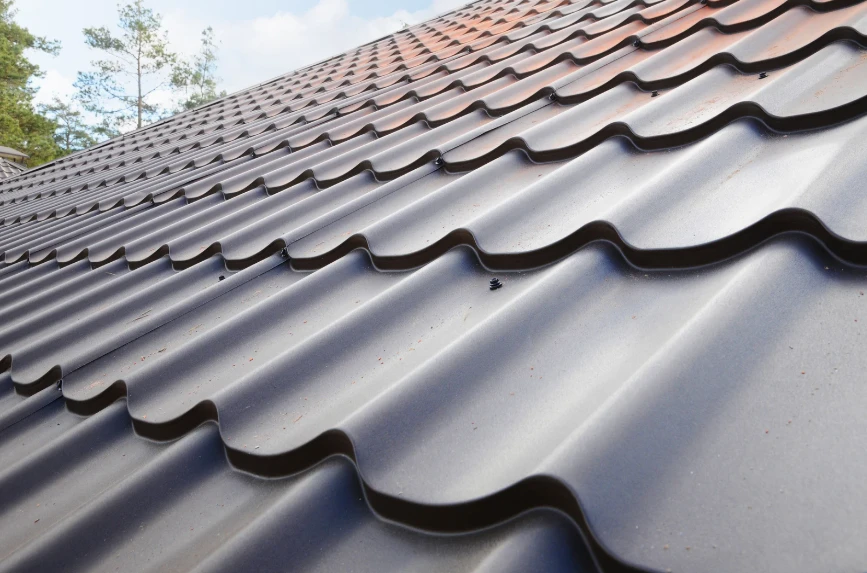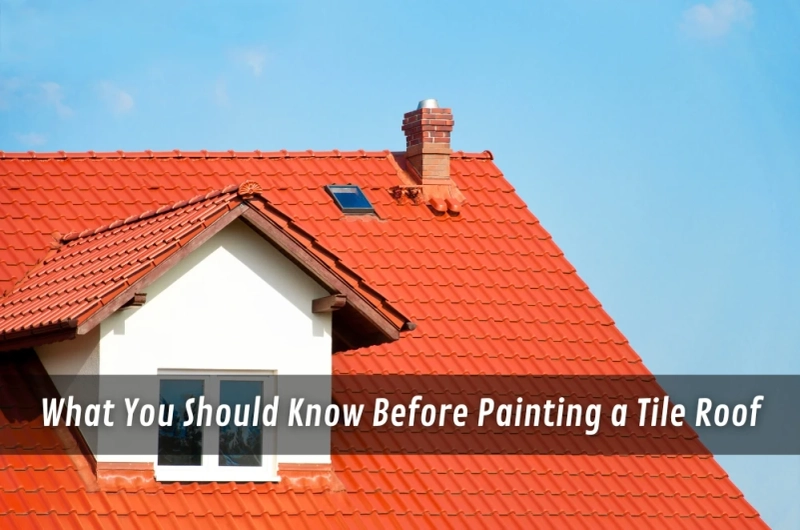Noticing faded patches or surface wear on your tiled roof isn’t unusual, especially if it’s been exposed to years of harsh weather. For many homes, especially older ones, restoring surface protection often comes down to a decision about house roof painting. It's not just about appearance — paint acts as a barrier, helping the tiles resist moisture, UV damage, and surface decay.
But before deciding to paint, it’s worth understanding how this process differs from other exterior jobs. From material compatibility to surface prep, small missteps can have lasting consequences. A bit of clarity early on can help you approach the task with the right expectations — and avoid problems that don’t show up until much later.
Why painting a tile roof is different from other surfaces
Unlike walls or guttering, tile roofs take a real beating. They’re angled, exposed, and often made of porous materials like concrete or terracotta. Paint has to bond and flex, not just stick.
I’ve seen people use leftover house paint on their roofs — it never ends well. The coating blisters, flakes, and fades within a couple of years because it wasn’t made to handle that kind of expansion and exposure. Roof-specific acrylic paint with UV resistance and flexibility is non-negotiable.
Here are the top factors that make roof painting different:
- Tile porosity varies (especially with older cement tiles)
- Roofs get hotter than walls, leading to quicker thermal cycling
- Algae and lichen form faster on shaded slopes
- Access and safety make the application more complex
When does a tile roof need repainting?
Timing matters. Too soon, and you're layering over solid paint unnecessarily. Too late, and you risk damage beneath the surface.
Common signs include:
- Uneven colour or fading patches
- Flaky, chalky or brittle paint
- Fast-growing moss even after cleaning
- Tiles absorbing water during rain
- It’s been 8–10 years since the last paint
Roof painters also check the condition of ridge caps and flashing. Repointing work is often bundled with repainting for good reason — no one wants water creeping in after a fresh coat.
A closer look at roofing performance indicators
Data on roofing benchmarks can shed light on how your roof is performing compared to industry expectations. It also validates maintenance habits or material choices — even if you’re not running a business.
In particular, professionals often refer to general roof maintenance tips to ensure practices align with national standards on roofing durability, exposure risks, and longevity factors.
Those reference points become useful when you're troubleshooting unexpected wear, identifying repair priorities, or understanding structural shifts, especially in older homes.
Preparing a tiled roof before painting
Prep is 80% of the work. Rushing it means the new paint won’t last — or worse, it might trap moisture and cause bubbling.
Here’s what a proper prep job looks like:
- High-pressure cleaning to remove debris, moss, and old coatings
- Tile repairs for any cracks, chips or broken edges
- Ridge cap rebedding and repointing, where required
- Application of sealers or primers for bonding
It’s not glamorous, but it's essential. I’ve seen jobs where people skipped sealing — the paint lifted within six months.
Bullet points worth noting:
- Cleaning needs water pressure
- Primer bonds to the surface and prevents absorption
- Repairs should be done before any paint touches the roof

Choosing the right time and weather window
Paint needs dry, warm conditions to cure properly. In cooler or wetter climates, this narrows your painting window.
Avoid painting in:
- Rainy or humid seasons
- Mid-winter (poor curing, moisture issues)
- Peak heat (tiles too hot to hold paint)
Late spring to early autumn works best. Watch the forecast — even morning dew or overnight condensation can sabotage a good paint job.
Why your roof paint choice matters
Not all paints are created equal. For tile roofs, you’ll want:
- Water-based acrylic formulas (for breathability and durability)
- UV-resistant properties
- Colour retention (especially with deep reds or charcoals)
- Optional: Heat-reflective coatings to reduce thermal load
Top brands will offer 10–15 year durability — but only when applied correctly.
Don’t ignore the signs of a compromised surface
Sometimes a bad paint job isn’t the problem — it’s that the roof needed more than just paint.
Before any work starts, inspect for signs of damage, especially water infiltration. Paint won’t fix leaks, and in some cases, it hides them temporarily. Addressing underlying issues can save major headaches down the line.
I recently reviewed a home where water had been seeping through the ridge capping for years — paint made it look pristine, but the internal damage had already begun. The repair started with a targeted roof leak repair before the team even opened a tin of paint.
Routine upkeep helps preserve the paintwork
Keeping your newly painted roof in good shape doesn’t take much, but it does require consistency.
Here are a few ways to extend its life:
- Remove debris from gutters and valleys every 6–12 months
- Monitor tile movement or cracks after extreme weather
- Gently hose down dirt or leaf stains — avoid harsh scrubbing
- Schedule periodic inspections if your area is prone to lichen
Over time, these steps delay the need for repainting and help maintain surface protection.
Repointing adds protection and extends longevity
Beyond the paint job itself, structural stability matters. Loose ridge capping or degraded mortar isn’t always obvious at a glance, but it leaves your roof vulnerable.
That’s where quality roof repointing adds long-term value, ensuring rain stays out, tiles stay in place, and wind damage is minimised.
Combined with paint, these upgrades can effectively seal your roof system and reduce maintenance cycles.
Final thoughts
Painting a tile roof might look cosmetic on the surface, but in practice, it’s a form of protection — and one that requires careful prep, technical products, and realistic expectations. From proper cleaning to choosing the right time of year, every step influences how well the paint holds up.
Whether you’re hiring someone or considering a DIY, take the time to understand your roof’s condition and what type of coating it truly needs. A bit of extra effort up front can buy you years of peace of mind.



